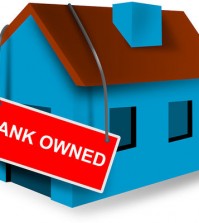- 4 Unexpected Things I’ve Learned From Buying My First Mobile Home Park
- How Ironic: America’s Rent-Controlled Cities Are Its Least Affordable
- U.S. homes are still a bargain on the international market
- Getting The Best Possible Quality Photos On MLSs and Syndicated Sites
- Home buyers in these markets have the upper hand
Institutional Investors Buy Fewer Single-Family Homes

Big institutions bought about half as many single-family houses in the first quarter of 2015 compared to the year before, according to the latest numbers from data firm RealtyTrac Inc., even though the investors overall are more active than ever in buying single-family houses.
“The large institutional investors are backing out while the smaller, mid-tier and mom-and-pop investors are remaining active,” said Daren Blomquist, vice president at RealtyTrac.
Large institutions continue to buy single-family homes, but the business model is changing. Home prices are no longer rising steeply in recovery from the real estate crash. That means investors in single-family homes will probably have to depend on operating income for a larger part of their investment yield. Institutional investors are choosing their properties more carefully, to find and buy homes that are more likely to provide healthy income from rents. They also now focus on a different set of property markets that can provide this income.
Institutional investors bought a total of 14,621 single-family homes in the first quarter of 2015. These home sales add up to just 3.4 percent of all sales. That’s down from 6.2 percent a year ago, and it’s the lowest share in four years. At the same time, investors overall are becoming a larger and larger part of the home buying market. These non-occupant buyers—any buyer who purchases a home but has their property tax bill mailed somewhere else—bought 36.8 percent of the homes sold in the first quarter of 2015. That’s a larger share than any other period since the first quarter of 2011.
“I think the institutions went on a feeding frenzy and are now trying to figure out what their long-term business plan is,” says Don Ganguly, CEO of HomeUnion, an online real estate investment management firm specializing in single-family rental homes. He should know—HomeUnion started out four years ago as a buyer of single-family housing after the housing crash, using money raised from institutional investors. Today HomeUnion mostly buys and manages single-family rental homes mostly on behalf of smaller investors who own just a few properties. (Data firms like RealtyTrac define “institutional investors” as entities that buy more than 10 homes at a time.)
In most metropolitan areas, home prices have recovered significantly, though institutional investors have not begun responded by cashing in on their portfolios. “We are seeing very few institutional investors selling off in large quantities,” says RealtyTrac’s Blomquist.
Instead, institutional investors appear to be settling in for the long haul. They continue to grow their inventory by buying relatively low-priced houses in markets with strong demographic demand. “Institutional investors are still actively purchasing single-family rentals,” adds Blomquist, “but they are gravitating toward markets where lower-end inventory is still available.”
The metropolitan area where institutional investors accounted for the biggest share of homebuyers is Memphis, Tenn., where they bought 14.1 percent of the homes sold in the first quarter of 2015, followed by Charlotte, N.C. (12.1 percent); Atlanta (9.6 percent); Jacksonville, Fla. (8.5 percent); and Oklahoma City, Okla. (7.6 percent), according to RealtyTrac.
“Institutional investors have really migrated to fast-growing Southern markets,” says Sam Khater, deputy chief economist for data firm CoreLogic.
Houses going through the foreclosure process are still coming up for sale—in large numbers in some markets. But those aren’t the places where institutional investors are buying.








 100% Secure
100% Secure
You must be logged in to post a comment Login